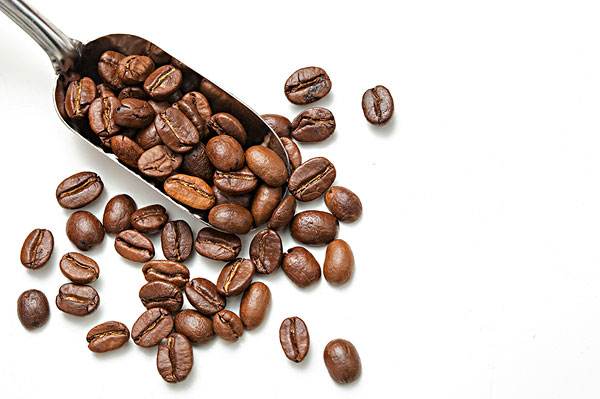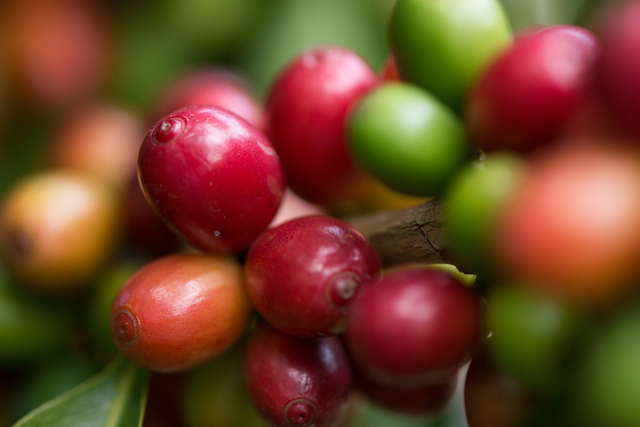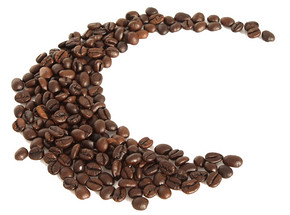Brief introduction of compound washing method of coffee and beans in Kenya
Follow the caf é (Wechat official account vdailycom) and found that Beautiful Cafe opened a small shop of its own.
Kenya "double washing method"
The Kenyan double washing method is also known as Kenyan double washing fermentation (double fermentation).
The reason is that there are high and low layers in the washing trough. Coffee farmers usually pick out defective beans from the harvested coffee berries in the evening, remove the peel and pour the shell beans with mucus into the upper fermentation tank, or use dry bodies that do not enter the pool water to ferment, wash them with water the next morning after fermentation all night, remove most of the pectin, and carry out second-degree fermentation in the lower purification tank.
In the process of secondary fermentation, the circulating water is changed every 3 to 5 hours to avoid mold and odor, and then introduced into the washing ditch to remove the residual pectin.
(the picture shows the cleaning and collection steps of coffee farmers after the second washing.)
The whole process takes at least 36 hours, after which the washed shelled beans need to be soaked in a clean pool for at least 12 hours, and finally dried and dehydrated, which is several times more time-consuming than the total treatment time in Central and South America and a lot more water demand.

Classification of coffee grades in Kenya
Kenya is a well-known producer based on the size of coffee beans. It is usually divided into nine grades, according to the bean type, there are PB (round beans, accounting for about 10% of the total output), in addition, there are E (elephant beans), AA, AB, C, T, TT, MH, ML according to size. The best coffee grade is bean-shaped berry coffee PB, followed by AA++, AA+, AA, AB and so on.
1) Common categories:
Hand-picked coffee fruit, picked by hand, picked out immature fruit (unripe), overripe fruit (overripe) and other defects, peeled, after about 36 hours of fermentation, placed on a metal grid for sun drying, in the processing plant to remove the seed shell (parchment), become a blue-green appearance of attractive Kenyan raw beans.
These beautiful raw beans are graded according to particle size (size), shape (shape) and weight (weight):
E:kenyaE, elephant beans, elephantbean,18 and above (including round beans)
AA:KenyaAA,17-18 mesh
AB:KenyaAB,15-16, which is a mixture of An and B.
Light beans selected by TT:AA and AB by airflow separator
Above PB:KenyaPB,15, round bean
CRV 12-14 mesh and PB light bean screened by air flow separator
Under 12 eyes, there are more defective beans, chopped beans and light beans.
HE: beyond the above level becomes HE (HulledEars)
2) the raw beans without official standard grading are UG (ungrade).
E,AA,AB,PB → UG1
C,TT,T,HE → UG2
(note: class An over 17 mesh (6.8mm), grade B over 16 mesh (6.3mm) 18 mesh = 18cm 64 inches, 1 inch = 25.4mm) Kenyan coffee varieties
Bourbon Bourbon was first brought to Kenya for planting. In the 1950s, the then agricultural research institution ScottLaboratory selected two excellent hybrids, SL-28 and SL-34, through unremitting efforts, subverting the long-standing prejudice of artificial breeding without excellent natural varieties. SL-28 and SL-34 help Kenyan coffee to form its own unique flavor characteristics and establish a perfect reputation in the coffee industry.
According to botanists in SL laboratory, SL28 and SL34 are genetic variants. Among them, SL28 has a mixed pedigree of French missionaries, mochas and Yemens Tibica. The goal of cultivating SL28 was to mass produce coffee beans with high quality and resistance to diseases and insect pests.
Although the yield of SL28 was not as high as expected, the copper leaf color and broad bean-shaped beans have great sweetness, balance and complex flavor, as well as remarkable citrus and plum characteristics. SL34 is similar to SL28 in flavor, with a heavier, fuller and cleaner finish than SL28, except for the complex acidity and great sweetness of the finish. SL34 has French missionaries, bourbon, and more Tibica ancestry. Dou looks similar to SL28, but is more adaptable to sudden heavy rain. It is these two important varieties that lead us to the unique Kenyan style: strong acidity, rich taste and beautiful balance.
Coffee growing area in Kenya
The coffee producing areas in Kenya are mainly concentrated in the plateau areas represented by Mount Mt.Kenya. Tropical climate, acid red volcanic soil provides a natural and suitable growth environment for coffee. The seven major producing areas are the most famous, including Nieri, Sika, Chianbu, Geliniya, Ruiru, Mulanga and the western side of Mount Kenya, with the main producing areas such as Nyeri and Ruiru in the middle.
Kenyan coffee processing
Large farms usually have independent treatment facilities. A large number of small farmers usually pick ripe coffee fruits by hand. Coffee picking is a labor-intensive job that requires the whole family to deploy and even hire workers during the harvest season. The fresh fruit of the picked coffee needs to be delivered in time to the cooperative-owned coffee processing plant for pulping, which may be carried by ox carts, pick-up trucks or trucks. After peeling, Parchmentcoffee is briefly kept in the cooperative's processing plant and sent to a privately owned factory for shelling treatment.
Important Notice :
前街咖啡 FrontStreet Coffee has moved to new addredd:
FrontStreet Coffee Address: 315,Donghua East Road,GuangZhou
Tel:020 38364473
- Prev

PB Evaluation of Kenyan Coffee beans
Follow the caf é (Wechat official account vdailycom) found that the beautiful cafe opened a small shop Kenya PB is much smaller than Kenya AA, the bean body is round, conducive to uniform heating when baking, in order to retain Kenya's unique wild atmosphere, generally use moderate baking, about 40 seconds after the explosion out of the pot, beans can see obvious folds, color is not
- Next

How to brew Kenyan AA caro goto coffee beans
Kenya AA Carrogoto, a Kenyan AA carogoto from Neri, Kenya, is a breed of amazing coffee that grows on a plateau at an altitude of 1700 meters and is grown on only small coffee farms. The use of compound washing treatment in Kenya, coupled with the large temperature difference between day and night, and the red phosphoric acid soil in Kenya, make sweet and sour the main flavor of Kenya.
Related
- Detailed explanation of Jadeite planting Land in Panamanian Jadeite Manor introduction to the grading system of Jadeite competitive bidding, Red bid, Green bid and Rose Summer
- Story of Coffee planting in Brenka region of Costa Rica Stonehenge Manor anaerobic heavy honey treatment of flavor mouth
- What's on the barrel of Blue Mountain Coffee beans?
- Can American coffee also pull flowers? How to use hot American style to pull out a good-looking pattern?
- Can you make a cold extract with coffee beans? What is the right proportion for cold-extracted coffee formula?
- Indonesian PWN Gold Mandrine Coffee Origin Features Flavor How to Chong? Mandolin coffee is American.
- A brief introduction to the flavor characteristics of Brazilian yellow bourbon coffee beans
- What is the effect of different water quality on the flavor of cold-extracted coffee? What kind of water is best for brewing coffee?
- Why do you think of Rose Summer whenever you mention Panamanian coffee?
- Introduction to the characteristics of authentic blue mountain coffee bean producing areas? What is the CIB Coffee Authority in Jamaica?

